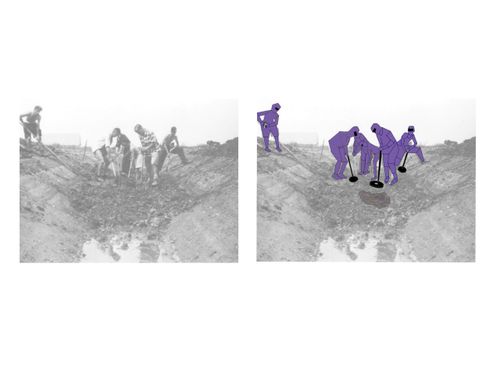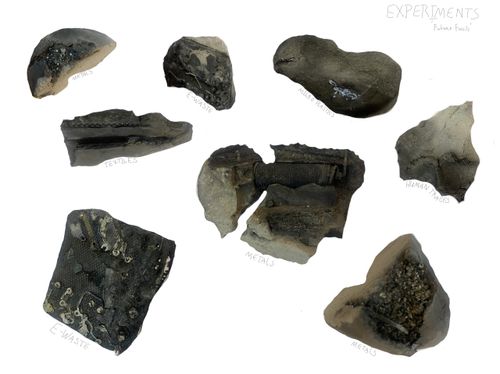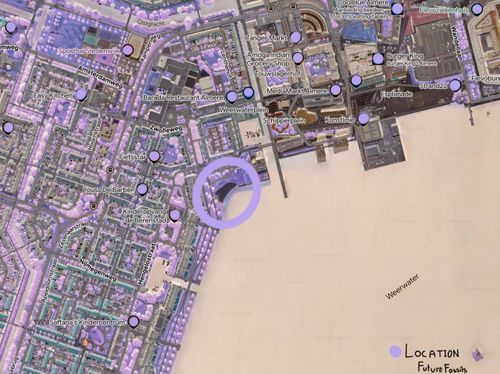Land Art in the City | Iris Hagel


(English below)
Project: Future Fossils
Wat laten wij achter voor de toekomst?
Op het Stedenwijkstrand heeft kunstenaar Iris Hagel een archeologische vindplaats ingericht vol ‘toekomstige fossielen’. Stel je voor: het is het jaar 12.500 na Chr. en archeologen ontdekken de overblijfselen van ons leven in 2025.
Net zoals wij de prehistorie kennen via fossielen, zullen toekomstige generaties ons herinneren door wat wij achterlaten. Future Fossils schetst een toekomst waarin Flevoland opnieuw overstroomt en pas duizenden jaren later weer droogvalt.
Dit werk is zowel een spiegel als een uitnodiging: de materialen die we vandaag maken, zijn de fossielen van morgen. Hoe willen wij als samenleving herinnerd worden?
Bio
Iris Hagel (1996, NL) is ruimtelijk ontwerper en producent. Ze studeerde Industrieel Ontwerpen aan de KABK in Den Haag, waar ze zich richtte op het bekritiseren van de consumptie van huidige generaties. Menselijk gedrag en de sporen en resten die we achterlaten, hebben haar altijd gefascineerd en vormen de kern van haar werk. Door emotie en confrontatie in haar projecten in te zetten, wil ze aanzetten tot reflectie over ons menselijk handelen.
ENGLISH
Project: Future Fossils
What will we leave behind for the future?
On the Stedenwijkstrand, artist Iris Hagel has created an archaeological site filled with “future fossils.” Imagine: it is the year 12,500 AD and archaeologists uncover the remains of our lives in 2025.
Just as we know prehistory through fossils, future generations will remember us by what we leave behind. Future Fossils envisions a time when Flevoland has once again been flooded, only to be reclaimed thousands of years later.
This work is both a mirror and an invitation: the materials we create today are the fossils of tomorrow. How do we want to be remembered as a society?
Bio
Iris Hagel (1996, NL) is a spatial designer and producer. She studied Industrial Design at the KABK in The Hague, where she focused on critiquing the consumption habits of today’s generations. Human behavior, and the traces and remains we leave behind, have always fascinated her and form the core of her work. By using emotion and confrontation in her projects, she aims to provoke reflection on our human actions.
